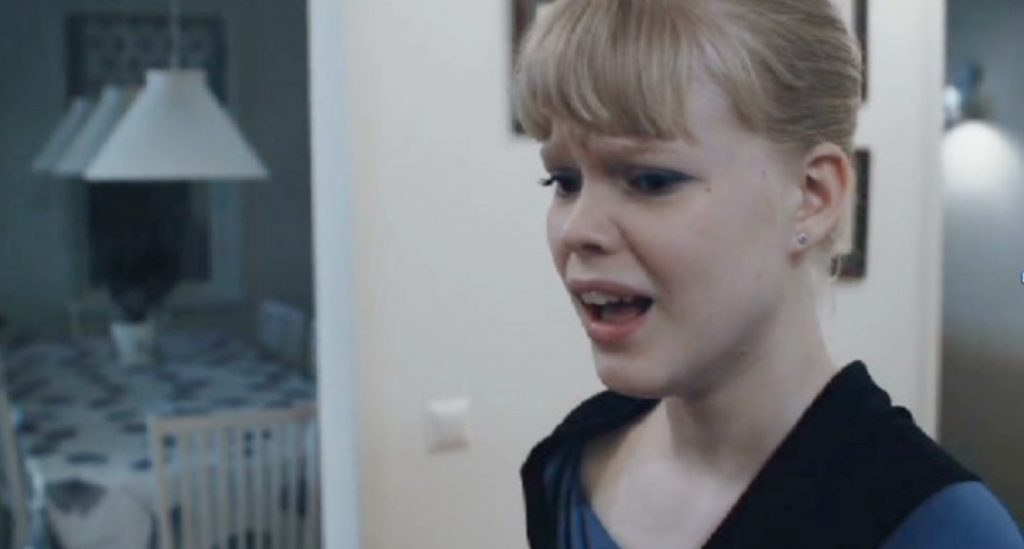 A young girl Nora stares shocked at her mother Anu. Anu stands expressionless by the kitchen table and scrapes the left-over spaghetti from Nora’s plate into a plastic bag. She places the plate into the bag and starts putting there other dining dishes, takes a firm hold of the bag and smashes it against the table. Nora is horrified: “Mother! What are you doing?”. Anu continues smashing the bag without paying attention to her daughter. Nora begs her to stop. Anu collapses crying against the table top. Nora approaches, puts her arms around the crying mother and starts slowly caressing her hair.
A young girl Nora stares shocked at her mother Anu. Anu stands expressionless by the kitchen table and scrapes the left-over spaghetti from Nora’s plate into a plastic bag. She places the plate into the bag and starts putting there other dining dishes, takes a firm hold of the bag and smashes it against the table. Nora is horrified: “Mother! What are you doing?”. Anu continues smashing the bag without paying attention to her daughter. Nora begs her to stop. Anu collapses crying against the table top. Nora approaches, puts her arms around the crying mother and starts slowly caressing her hair.
The dramatic scene describes a daughter witnessing a nervous breakdown of her mother. Its narrative content remains the same should one read it in a textual form or viewed it as a movie. It is relatively well known how narratives are processed in the distinct human sensory cortices depending on the sensory input through which the narrative is perceived (reading, listening, viewing; [1–5]). However, far less is known of how the human brain processes meaningful narrative content independent of the media of presentation. To tackle this classical dichotomy issue between form and content in neuroimaging terms, we employed functional magnetic resonance imaging (fMRI) to provide new insights into brain networks relating to a particular narrative content while overlooking its form.
In the image Nora (actress Rosa Salomaa); director Saara Cantell, cinematography Marita Hällfors (F.S.C), producer Outi Rousu, Pystymetsä Oy, 2010.
Abstract
Narratives surround us in our everyday life in different forms. In the sensory brain areas, the processing of narratives is dependent on the media of presentation, be that in audiovisual or written form. However, little is known of the brain areas that process complex narrative content mediated by various forms. To isolate these regions, we looked for the functional networks reacting in a similar manner to the same narrative content despite different media of presentation. We collected 3-T fMRI whole brain data from 31 healthy human adults during two separate runs when they were either viewing a movie or reading its screenplay text. The independent component analysis (ICA) was used to separate 40 components. By correlating the components’ time-courses between the two different media conditions, we could isolate 5 functional networks that particularly related to the same narrative content. These TOP-5 components with the highest correlation covered fronto-temporal, parietal, and occipital areas with no major involvement of primary visual or auditory cortices. Interestingly, the top-ranked network with highest modality-invariance also correlated negatively with the dialogue predictor, thus pinpointing that narrative comprehension entails processes that are not language-reliant. In summary, our novel experiment design provided new insight into narrative comprehension networks across modalities.